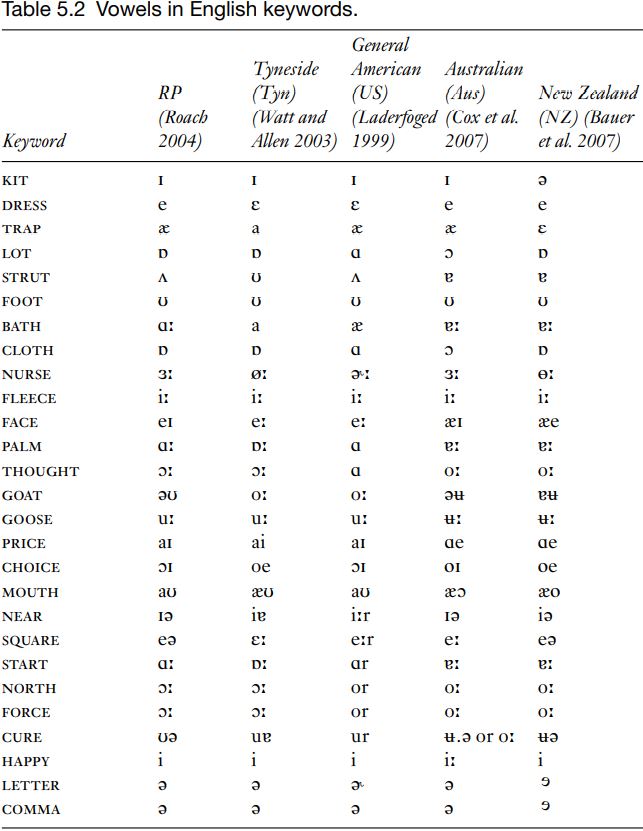
Transcribing vowels
 المؤلف:
Richard Ogden
المؤلف:
Richard Ogden
 المصدر:
An Introduction to English Phonetics
المصدر:
An Introduction to English Phonetics
 الجزء والصفحة:
66-5
الجزء والصفحة:
66-5
 22-6-2022
22-6-2022
 1276
1276
Transcribing vowels
We shall now discuss a few of the main issues in transcribing English vowels. In the examples here, we use the same conventions as the original researchers.
First, it must be decided whether to transcribe vowel quality, vowel quantity (length) or both. RP, for example, has short [I] (as in KIT) and long [i] (as in FLEECE). We could transcribe them as [i – i:], which captures the contrasting length ([:] is the diacritic for long) but not quality; or as [I – i], which captures quality but not quantity; or as [I – i:], which captures both quality and quantity. Representing either quality or quantity (but not both) makes the transcription simpler.

Secondly, we have to decide whether to use simple, Roman-shaped vowel symbols, or to use other shapes. For example, most varieties of English have in words like goose a vowel that is much fronter than CV8; [4] is a more accurate representation of it than [u]. But it could also be argued that [u] should be preferred because it is a simpler shape, and is more familiar to English speakers. The symbol  highlights the fact that the sound it stands for is not the same as for instance in German ‘Kuh’, ‘cow’, which is closer to CV8; but
highlights the fact that the sound it stands for is not the same as for instance in German ‘Kuh’, ‘cow’, which is closer to CV8; but  is a less familiar symbol. In making any transcription, the conventions should be stated: if [u] is used, the accompanying conventions should say that [u] stands for a vowel with a quality like
is a less familiar symbol. In making any transcription, the conventions should be stated: if [u] is used, the accompanying conventions should say that [u] stands for a vowel with a quality like  .
.
A third issue in transcription is how to handle the final parts of diphthongs, and (in rhotic varieties) r-coloured vowels. There is a tradition of using vowel symbols like [aI] and [aυ] for PRICE and MOUTH, but there is also a strong (mostly American) tradition of representing these vowels as [aj aw], so that [j w] are parallel with [r] – that is, START is transcribed with [ar], parallel with [aw] and [aj].
 الاكثر قراءة في Phonetics
الاكثر قراءة في Phonetics
 اخر الاخبار
اخر الاخبار
اخبار العتبة العباسية المقدسة


